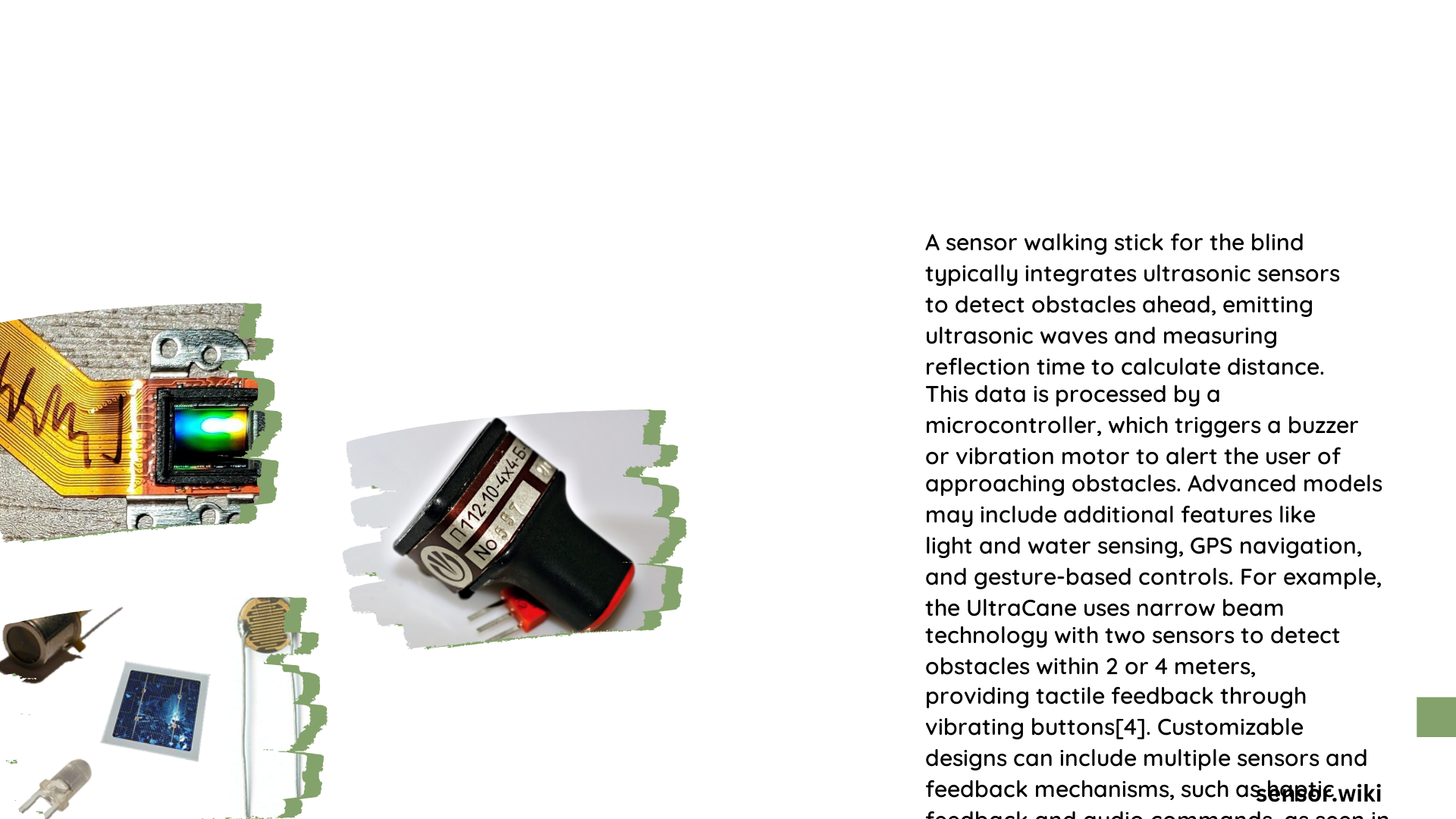Sensor walking sticks represent a groundbreaking technological solution for visually impaired individuals, transforming traditional white canes into intelligent navigation devices. By integrating advanced sensors like ultrasonic, infrared, and GPS technologies, these innovative mobility aids provide real-time obstacle detection, spatial awareness, and enhanced safety, empowering users to navigate complex environments with unprecedented confidence and independence.
What Makes Sensor Walking Sticks Unique?
How Do Ultrasonic Sensors Detect Obstacles?
Ultrasonic sensors are the cornerstone of modern sensor walking sticks, functioning through a sophisticated detection mechanism:
- Wave Emission: Sensors emit high-frequency sound waves
- Reflection Measurement: Calculate distance by measuring wave return time
- Obstacle Identification: Detect objects within 4-meter range
- Instant Feedback: Provide immediate vibration or audio alerts
| Sensor Type | Detection Range | Response Time | Accuracy |
|---|---|---|---|
| Ultrasonic | 0-4 meters | <10 milliseconds | 95-98% |
| Infrared | 0-2 meters | <5 milliseconds | 90-95% |
| Light | Ambient light detection | Instantaneous | 85-90% |
What Technologies Enhance Navigation?
Advanced sensor walking sticks incorporate multiple technological features:
- GPS Integration
- Turn-by-turn navigation
- Location tracking
-
Public transit information
-
Connectivity Options
- Bluetooth pairing
- Smartphone app integration
-
Voice assistant compatibility
-
Sensory Feedback Mechanisms
- Vibration alerts
- Audio notifications
- Directional guidance
How Accurate Are Obstacle Detection Systems?
The accuracy of sensor walking sticks depends on several critical factors:
- Sensor Quality: High-end ultrasonic sensors provide 95-98% detection accuracy
- Environmental Conditions: Performance varies in different settings
- Sensor Placement: Strategic positioning enhances detection capabilities
- Processing Speed: Millisecond-level response times ensure real-time feedback
What Are the Cost Considerations?
Sensor walking stick prices vary significantly based on technological complexity:
- Basic Models: $50-$200
- Advanced Smart Canes: $500-$1,500
- Insurance Coverage: Partial reimbursement possible
- Maintenance: Low annual costs
Who Benefits Most?
Target users include:
– Completely blind individuals
– Partially sighted persons
– Elderly with vision impairments
– Rehabilitation centers
– Independent mobility seekers
Technical Specifications and Design

What Components Make Up a Sensor Walking Stick?
Key components include:
– Microcontroller (Arduino/Raspberry Pi)
– Ultrasonic sensors
– Vibration motors
– Battery pack
– Ergonomic handle
– Lightweight graphite/aluminum frame
How Durable Are These Devices?
Durability factors:
– Waterproof design
– Shock-resistant construction
– Replaceable sensor modules
– Battery life: 8-12 hours continuous use
– Warranty: 1-2 years for most models
Future Development Potential
Emerging trends in sensor walking stick technology:
– AI-powered obstacle recognition
– Machine learning adaptation
– Miniaturization of components
– Enhanced battery efficiency
– Cloud-connected navigation systems
Conclusion
Sensor walking sticks represent a transformative technology, bridging technological innovation with human mobility needs. By combining advanced sensors, intelligent processing, and user-centric design, these devices offer visually impaired individuals unprecedented navigation independence.
